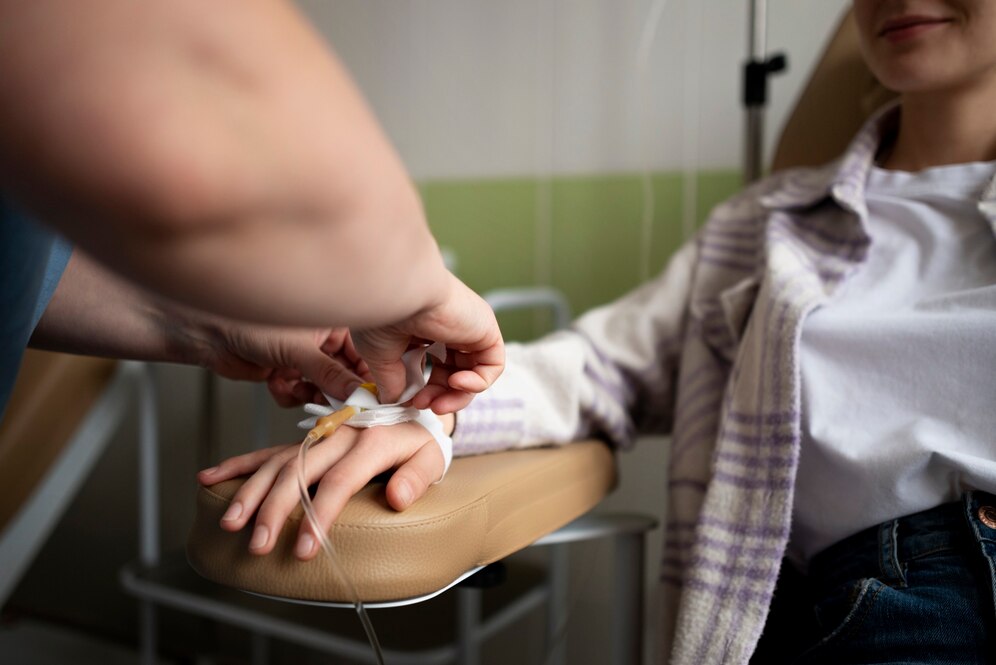Chronic Wounds in Long-Term Care: A Silent Epidemic
Chronic wounds are a major challenge in long-term care (LTC) and skilled nursing facilities (SNFs), where frail and aging residents face increased risks of pressure injuries, diabetic foot ulcers, and venous ulcers. Without proper treatment, these wounds lead to infections, amputations, and even death.
For LTC operators, unmanaged wounds are not just a clinical issue—they’re a financial and regulatory risk. Facilities that lack a structured, proactive wound care program face higher costs, more hospital transfers, and increased scrutiny from state surveyors and payers.
The Cost, Risk & Regulatory Impact of Wounds in Long-Term Care
- Pressure injuries affect 10% of LTC residents, with incidence rates ranging from 2.3% to 23.9%, depending on care levels.
- The cost to treat a single pressure injury ranges from $20,900 to $151,700, straining facility resources.
- Diabetic foot ulcers impact up to 15% of LTC residents with diabetes, often leading to infection, amputation, and hospitalization.
- Chronic venous ulcers make up 80% of lower extremity wounds, requiring long-term management and costly interventions.
- Hospitalization risks increase with chronic wounds, leading to higher penalties and reduced facility reimbursements.
- Regulatory fines for wound-related deficiencies can be severe, with nursing home penalties averaging $18,056 per citation, while some facilities have faced fines as high as $160,000 for pressure ulcer-related violations.
Given this variability, long-term care facilities should prioritize comprehensive wound care management and compliance with care standards to mitigate the risk of substantial fines and, more importantly, to ensure resident well-being.
With assisted living and SNF occupancy on the rise, the demand for cost-effective, outcome-driven wound care solutions is greater than ever.
The Importance of Advanced Wound Care Dressings in LTC
Traditional wound care approaches are no longer enough. Today, per regulatory guidance, facilities must follow published, evidence-based standards of practice. Utilizing advanced primary and secondary dressings that promote faster healing, lower infection risk, and better resident comfort will meet those standards.
Key Advanced Wound Care Dressings for LTC Facilities:
✅ Collagen Dressings – Support tissue growth and healing in chronic wounds.
✅ Bordered Super-Absorbents – Manage high-exudate wounds, preventing leakage and maceration.
✅ Silicone Dressings – Reduce trauma and pain upon dressing changes, especially for fragile skin.
✅ Antimicrobial Dressings – Help prevent infection in wounds at high risk of bacterial colonization.
However, choosing the right dressing is only part of the solution. Facilities must also understand which products are reimbursable, ensuring cost-effective care without unnecessary financial strain.
Curitec: Your Partner in Wound Care, Compliance & Reimbursement Navigation
At Curitec, we don’t just supply dressings—we provide a comprehensive wound care program that combines in-person ni, reimbursement expertise, and real-time reporting to help LTC facilities improve outcomes while controlling costs and mitigating regulatory risks.
How Curitec Helps LTC Operators:
✔ In-Person Clinical Support & Monthly Rounding:
Curitec’s experienced wound care clinicians round monthly with the treatment team and practitioner, ensuring continuity of care, product optimization, and compliance with best practices. This hands-on approach is essential for maximizing the benefits of Curitec’s Part B services, improving wound healing rates, and reducing facility risk.
✔ Expert Navigation of Reimbursable Wound Care Products:
Curitec helps facilities identify and implement the most effective, reimbursable advanced wound dressings, reducing unnecessary wound-related expenses.
✔ Comprehensive Staff Support & Education:
Curitec works alongside nursing teams to ensure proper product selection, application, and best-practice wound care management.
✔ Real-Time Reporting & Transparency:
Curitec’s advanced reporting platform provides full visibility into wound care trends, product utilization, and patient outcomes, enabling data-driven decisions to enhance care quality and cost efficiency.
Real-Time Reporting: Driving Transparency & Accountability
Curitec’s real-time data and analytics empower facilities to:
🔹 Track wound progression and healing rates
🔹 Monitor dressing usage and cost efficiency
🔹 Ensure compliance with regulatory standards
🔹 Identify high-risk residents before complications arise
With Curitec’s real-time reporting, LTC administrators gain full visibility into their wound care program, ensuring transparency, accountability, and better financial sustainability.
Let’s Talk Wound Care Solutions for Your Facility
Proactive wound care is no longer optional—it’s essential. Curitec helps long-term care facilities improve wound outcomes while lowering costs and regulatory risk.
📩 Email us at Letstalk@primesourcex.com
📞 Call us at (877) 877-4638
Let’s discuss how Curitec can help transform wound care in your facility today.

Michael is an accomplished leader with deep expertise in the healthcare sector. As the CEO of Prime Source, he has driven innovation and strategic growth in healthcare procurement and management. His extensive knowledge of the industry has made him a sought-after speaker, regularly lecturing at trade groups, seminars, and to industry executives on the most pressing healthcare trends and challenges. Michael is passionate about exploring the intersection of business and healthcare, providing thought leadership that shapes the future of the field.

